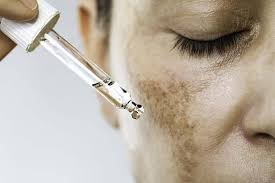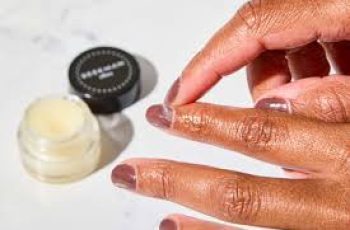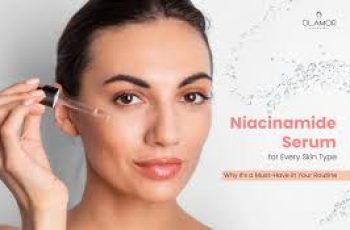
Skin Hyperpigmentation: Types and Causes
I am a dermatologist in Miami Florida, so I see patients often with areas of hyperpigmentation. Most causes of abnormal dark skin can be treated with skin lighting skin care products. However you will get better results if you identify the cause of the skin hyperpigmentation. This blog will discuss the causes of the different types of skin hyperpigmentation disorders. Before we get started, make sure you find out your Baumann Skin Type with the free quiz here!
Take the Quiz
Uneven distribution of pigment across the skin
Can be caused by UV radiation, hormones, and more.
Treatment cycles are usually a few months.
Table of contents
What is hyperpigmentation?
The definition of hyperpigmentation is an excess of pigment that leads to an uneven skin tone. Hyperpigmented skin is darker than surrounding areas of skin. Most types of hyperpigmentation are due to an excess of the skin pigment melanin. This occurs when the cells in the skin that make color- melanocytes- are activated to increase melanin pigment production. The production of pigment is dependent on an enzyme called tyrosinase.
If you’re here for my picks of the best skin lightening products, here they are:
What skin type is prone to hyperpigmentation?
Skin types that are quick to produce melanin are more likely to develop hyperpigmentation.
Darker skin tones, pregnant women, people on estrogen, and those exposed to heat and sun are more likely to hyperpigment.
These Skin Types are more prone to get hyperpigmentation:
Fitzpatrick Skin Type 3
Fitzpatrick Skin Type 4
Fitzpatrick Skin Type 5
Fitzpatrick Skin Type 6
Baumann Skin Type 1
Baumann Skin Type 3
Baumann Skin Type 5
Baumann Skin Type 7,
Baumann Skin Type 9
Baumann Skin Type 11
Baumann Skin Type 13
Baumann Skin Type 15
Take the Quiz
Can white people get hyperpigmentation?
Light skin types can get an uneven skin tone, melasma and dark spots- especially when pregnant. This is so common in pregnancy that it is called the mask of pregnancy.
Increased production of skin pigment can also occur from inflammation.
All skin colors and tones can get hyperpigmentation, but it is more likely in darker skin types and skin that tans easily. It is very uncommon in redheads who have a genetic defect that makes it difficult for them to make pigment.
What does hyperpigmentation look like?
Hyperpigmentation from melanin looks like dark spots patches on the skin that can be light brown, dark brown, grey or black.
It may be across the central face as seen in melasma, in the site of a previous pimple, or in an area of recent injury or sun exposure. Tanned skin is an example of hyperpigmentation. Brown or black birth marks are another example.
It causes an uneven skin tone. You can see how these patches look on lighter skin in the image below.
where hyperpigmentation comes from
Hyperpigmentation Causes
Many things can trigger hyperpigmentation but they all cause increased pigment by activating one of the melanin stimulating pathways. There are many different biologic processes that are so complex that entire books have been written on this topic. (6) Many of these pathways involve melanocyte stimulating hormone (MSH) which triggers the melanocyte to make melanin. One way (but not the only way) that MSH makes melanin is by activating the enzyme tyrosinase. These pathways that lead to skin darkening are turned on by many things that we are exposed to. Production of melanin is the body’s way of protecting cellular DNA from UV radiation, so tanning is a protective mechanisms. It is much healthier to have darker skin and lowers your risk of skin cancer. However, when dyspigmentation occurs because the skin tone becomes uneven, the term hyperpigmentation is used.
Inflammation and sun exposure are the most common causes of hyperpigmentation.
Causes of hyperpigmentation include:
inflammation
injury
sun exposure
light exposure
increase in melanin stimulating hormone
estrogen hormones
phytophotodermatitis
ingredients that cause sun sensitivity like oil of bergamot
medications like blood pressure medications
repeated friction or scratching
What skin pigment causes hyperpigmentation?
Several pigments can make the skin darker.
Melanin is the most common pigment to cause hyperpigmentation. This pigment gives a red brown or brown black color to the skin that varies depending on the type of melanin. There are 2 types of melanin: eumelanin gives a brown or black color while pheomelanin gives skin a yellow or red color. It is eumelanin that is predominantly responsible for hyperpigmentation because it is the darker of the 2 types of melanin.
Hemosiderin gives the skin a purple hue. Bruises can cause hyperpigmentation due to deposition of hemosiderin which leaves a grey, blue-violet color on the skin. As hemosiderin breaks down into biliverdin and bilirubin the pigment changes from green to yellow. But in some cases, hemosiderin remains in the skin giving it a purplish hyperpigmentation. dark circles under the eyes are also believed to be due to deposition of hemosiderin.
Oral colloidal silver can leave a blue pigment in the skin. This is why you should never drink silver. This condition is called argyria.
Oral tetracycline is an antibiotic that cancan leave a dark blueish brown pigment on the skin.
Because melanin is by far the most common cause of hyperpigmentation, this blog will concentrate on the types of hyperpigmentation due to an excess amount of melanin.
What are the types of skin hyperpigmentation?
There are many different types of skin pigmentation. A suntan is the most common form of hyperpigmentation. The second most common for is post inflammatory hyperpigmentation that occurs from acne. There are 4 main types that are treated with skin care products:
Melasma
Post inflammatory hyperpigmentation
Skin Tanning
Sun spots
Of these, melasma is the hardest type to treat because it is very difficult to get rid of and tends to recur. Treating melasma requires skin lightening skin care products, two skin care routines, lifestyle habit changes, and a maybe even a prescription pill for hyperpigmentation.
Hyperpigmentation vs melasma
Melasma is a type of hyperpigmentation, but not all types of hyperpigmentation are melasma. Hyperpigmentation on the face, arms or chest that does not burn or itch is a symptom of melasma.
Hyperpigmentation vs tanning
The word hyperpigmentation has the connotation of being abnormal and unwanted. Tanning is a protective mechanism that results in a darker skin color. In reality tanning is a form of hyperpigmentation but because hyper mean an “excess”, we do not use the term hyperpigmentation when referring to tanning because most people do not complain that their skin is too tan.
Having a darker skin type such as Fitzpatrick 5 is also not considered hyperpigmentation because it is a normal state. You may call darker skin “melanized skin” but it is not correct to say hyperpigmented. Think of it this way- when the term “hyper” is used it implies a disorder, disease, or biologic dysfunction.
Why is it so hard to treat hyperpigmentation?
Hyperpigmentation can go away on its own; however, in many cases it requires treatment. If you change your habits, limit sun exposure, reduce inflammation, and add skin lightening ingredients to your skin care routine, the excess pigment will usually go away.
In some cases it is very hard to get rid of excess pigment. Lasers can treat hemosiderin in the skin and melanin, but if the laser causes inflammation, the melanin can return. It is very hard to get rid of melanin because it is the skin’s way of protecting itself and it wants to hold onto the pigment. Remember- the reason that melanocytes produce pigment is to protect your skin from sun. Melanin reflects away the sun’s harmful radiation, helping to prevent DNA damage and skin cancer. Your body has evolved to have this protective function.
Melanin and other pigments that are deeper in the skin are harder to remove than superficial pigments. When melanin is confined to the epidermis, it is easier to get rid of it with exfoliants. Melanin in the dermis is deeper and difficult to remove.
How to know if my hyperpigmentation is epidermal or dermal?
When melanin is deep in the dermis, it can take a skin care routine much longer to work.
There are 2 ways to tell:
Visualizing the skin with a camera such as the Canfield Viia camera
Shining black light on the skin which makes the melanin fluoresce.
Your dermatologist can use these technologies on your skin to tell you if your melanin is in the superficial epidermal layers or deeper in the dermis.
where is melanin in the skin
Hyperpigmentation Can Occur on Different Part of the Face and Body
Face
Discoloration of the skin on the face is very common on the face because of sun exposure. When your face is darker than your body, it is most likely that something in your skin care is making you tan more in the sun. This is called being photosensitive.
The most common causes of dark spots on the face are:
Melasma
Spots from acne
Sun spots
Sun sensitivity due to medications, fragrance or plant extracts or tetracycline
Many of these can be treated with skin lighteners in a skin care routine with sunscreen and products to inhibit tyrosinase, exfoliate, and block PAR-2 receptors.
If it does not improve, see your dermatologist because there are a few diseases like hemochromatosis and porphyria that can cause the face and neck to be darker than the rest of the body.
Neck
Discoloration on the neck is almost always caused by sun. The exception is acanthosis nigricans which has a velvety texture.
The other causes of a dark neck are:
Poikiloderma of Civatte
Perfume use on neck that increases neck tanning
Drugs that make you sun sensitive
Phytophotodermatitis
Phytophotodermatitis occurs when you touch your skin with fragrances or certain foods that make skin sun sensitive. The most common causes are perfumes, lime juice, celery and figs.
Back
Is your skin darker on your back? This is usually caused by post inflammatory hyperpigmentation from acne, folliculitis, or a rash. Some people get an itchy spot on the upper back that gets dark from excessive scratching. You can treat this with a prescription steroid cream or a natural anti-inflammatory oil like argan oil or jojoba oil. Make sure you wear a shirt that has a UPF of 50+ when in the sun.
Mouth
Darkness around the mouth occur when the perioral skin is irritated or inflamed.
The most common causes of dark skin around the mouth are:
melasma (upper lip)
perioral dermatitis (around the entire mouth)
Eczema
Lips
Dark lips can be your normal skin color.
Lips have less natural sun protection than other skin because they do not make sebum. This makes them more likely to burn and develop increased pigmentation.
Choose a lip balm with SPF to treat lip darkening of the lip lines.
Hyperpigmentation on the upper lip is usually due to melasma. See hyperpigmentation around the mouth discussed above.
Here are some of my favorite lip products with SPF!
Forehead
Dark spots on the forehead are almost always caused from sun exposure.
Make sure you are not forgetting to apply sunscreen to your forehead.
If SPF burns your eyes when you sweat, avoid the sunscreen ingredient avobenzone.
Legs
Sun exposure is not the only thing that causes darkness on leg skin; medications that make skin sun sensitive can also discoloration.
Other causes of dark leg pigmentation are:
amyloidosis
eczema
heat and infrared light
recent rash
bug bites
friction
Schamberg’s disease
Venous insufficiency
Eczema Hyperpigmentation
Atopic dermatitis, also called eczema, causes inflammation. This can lead to excessive itch and scratching. Both the scratching and the inflammation increases skin pigmentation.
This is why you may develop dark patches of skin in areas where you had eczema. Use an eczema cream that has barrier repair properties. Look for creams with the Maltese cross pattern for best results.
hyperpigmentation from eczema
To treat dark patches from eczema, you need to:
Treat eczema with a prescription medication or eczema cream
Use a barrier repair moisturizer
Choose a cleanser that is safe for eczema-prone prone skin that does not foam.
Here are some of my favorite eczema safe products!
Acne hyperpigmentation
When pimples heal they often leave behind dark pigment resulting in dark spots on the skin where a pimple was.
This occurs because Inflammation triggers the production of skin pigment.
Getting acne under control and using skin whitening ingredients like hydroquinone and niacinamide on the spots is the best way to handle these acne spots.
Conclusion
There are many causes of hyperpigmentation. Most types of hyperpigmentation improve with skin lightening treatments.
You will get better results if you identify the cause of the excess pigment, avoid sun, and use the right treatments. It all starts with knowing your Baumann Skin Type. (there are 16!)


